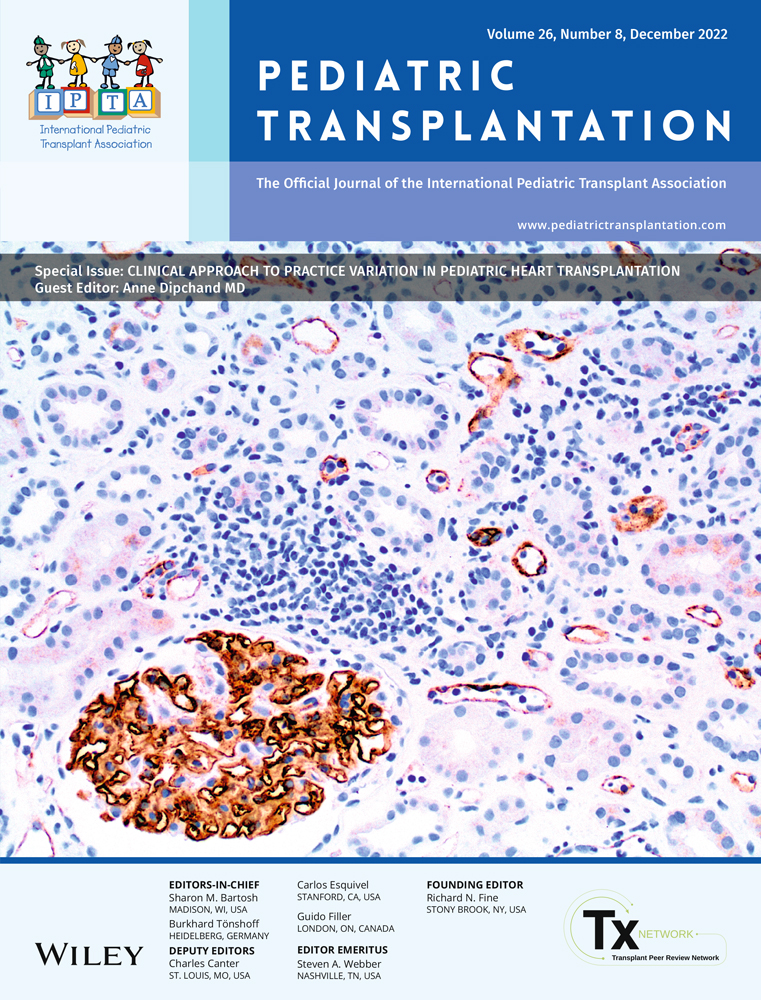Immediate extubation following pediatric liver transplantation
This study was supported by the NIH/NCATS Colorado CTSA Grant Number TL1 TR002533. The contents are the authors' sole responsibility and do not necessarily represent official NIH views.
Abstract
Background
Immediate extubation (IE) following pediatric liver transplantation is being increasingly performed. The aim of this study was to characterize the rate of IE at our institution and identify recipient factors predictive of IE.
Methods
All pediatric liver transplants performed at our institution between January 1, 2015 and December 31, 2020 were reviewed. Retransplants and multi-organ transplants were excluded. IE was defined as extubation in the operating room following transplant. Backward stepwise logistic regression at a p-value threshold of .05 was performed to identify variables associated with IE.
Results
IE was achieved in 58 (72%) of the 81 pediatric liver transplants. The IE cohort had significantly shorter ICU length of stay and overall hospital length of stay, though IE was not an independent predictor of posttransplant length of stay. Age <2 years, preoperative mechanical ventilation, and total intraoperative epinephrine and dopamine infusion requirements were significant, independent risk factors against IE. This multivariable model was highly predictive of IE (area under the curve = 0.89).
Conclusions
We describe the highest rate of IE postpediatric liver transplantation that has been reported to date and identified significant risk factors against successful IE.
CONFLICT OF INTEREST
The authors declare no conflicts of interest.
Open Research
DATA AVAILABILITY STATEMENT
The data that support the findings of this study are available from the corresponding author upon reasonable request.




